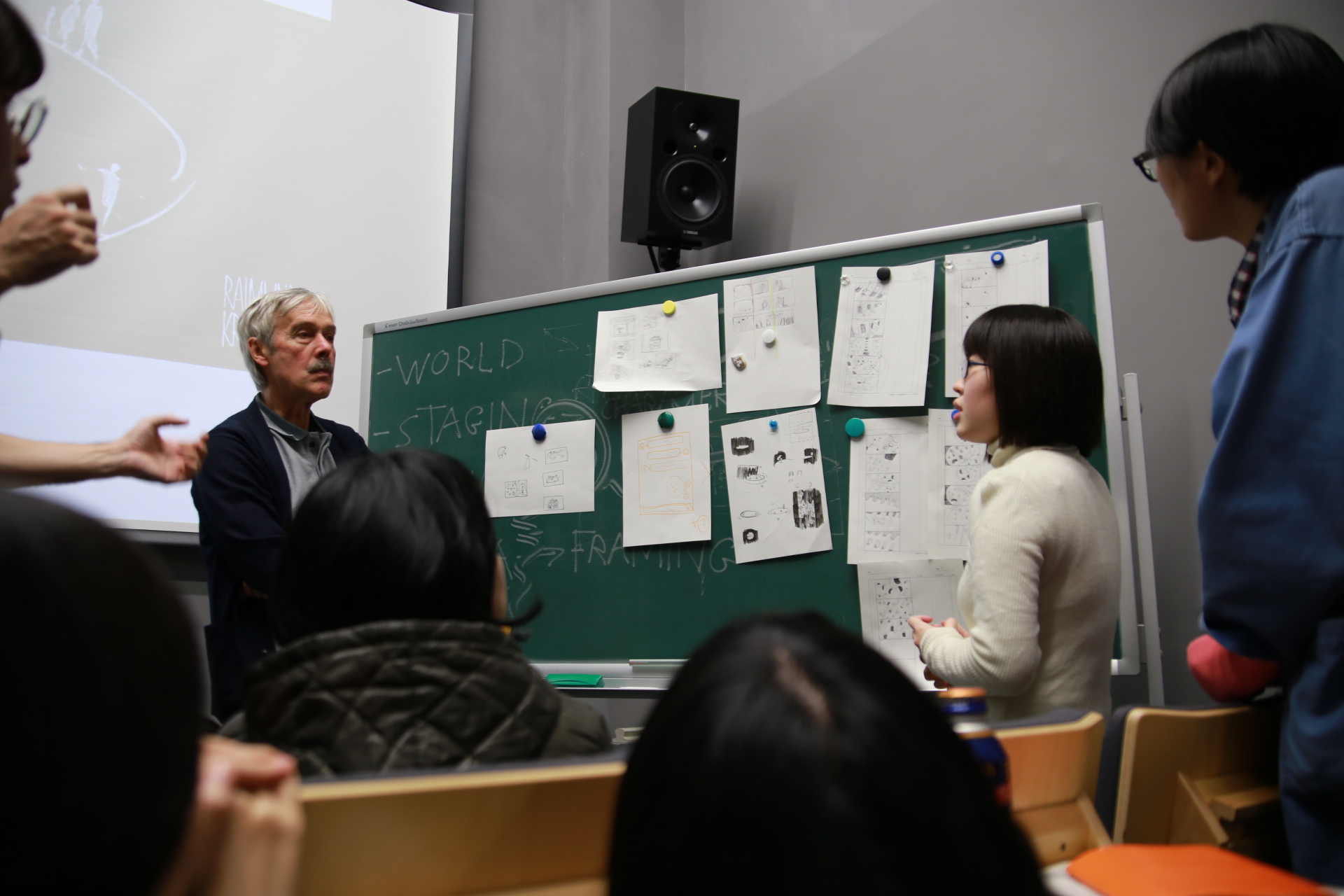ライムント・クルメ氏による特別講義及びコンテンポラリーアニメーション入門(第26回)Introduction to Contemporary Animation (26): Special Lecture and Workshop by Raimond Krumme
June 11, 2018
平成29年10月17日~27日にかけて、東京藝術大学映像研究科にて、ライムント・クルメ氏による特別講義及びコンテンポラリーアニメーション入門(第26回)が開催されました。ライムント・クルメ氏はベルリンとアメリカでインディペンデントの作家として数本の短編アニメーションを製作しており、カリフォルア、ケルン、韓国、台北で長年アニメーション教育にも携わっています。
アニメーション・ワークショップは、10月20日と23日に横浜校地馬車道校舎で行われました。今回のワークショップの課題は、ルーマニアの劇作家であるウジェーヌ・イヨネスコ氏の「椅子」の戯曲を読んで、どのようにアニメーションに変換するかのアイデアを考えるというものでした。参加者は、予め日本語訳のテキストを読んでからワークショップに臨みました。
初日はまず、サムネイルサイズの絵コンテとして、思いつくことを紙に描いていきました。クルメ氏からは、紙と手とのやりとりが大切で、「描くこと」の偶然性を見つけるようアドバイスがありました。画材は慣れているものでもよいが、使い慣れていない画材によって見えてくるものがあり、絵を描く行為は世界を観察する助けになる、ということです。課題の作品のどの側面を強調するかは学生の自由で、舞台設定のアイデアについてのプレゼンテーションが行われました。普段、演劇も見たことがなく、戯曲も読んだことがない学生が多く、まずテキストの内容を把握するのにも苦戦したようでしたが、クルメ氏からは、学生たちから新鮮で、異様で、様々なアイデアが出たことが素晴らしかったとポジティブなコメントをいただきました。
2日目は、前回の舞台設定を簡単な絵コンテ、アニマティクスに発展させたものに対し、相互に質問したり、コメントしたりしました。また演技についての指導では、実際の演技をアニメーション動画用紙に描いたりしました。
10月22日に行われた第26回公開講座「コンテンポラリーアニメーション入門」(演題:だまし絵、主と従の反転)では、クルメ氏の作品を制作年代順に解説を交え上映し、最後にCM作品も数本上映しました。台風にもかかわらず来場者総数60名となり、質問も途切れず、時間も30分ほど延長となる盛況でした。作家本人による本人作品に対する声が聞ける貴重な機会として、参加者からは大変ご好評をいただきました。
今回のワークショップは、教育経験が豊富な講師のクルメ氏の確実な授業進行により、普段学生があまり触れることのないヨーロッパ演劇の演出から刺激を受け、これまで気づいていなかったアニメーション制作の新たな側面に気づく大変有意義なものとなりました。また、英語の通訳を介してのディスカッションだったため、多くの学生にとっては、語学学習の必要性を改めて強く感じる良い機会となりました。
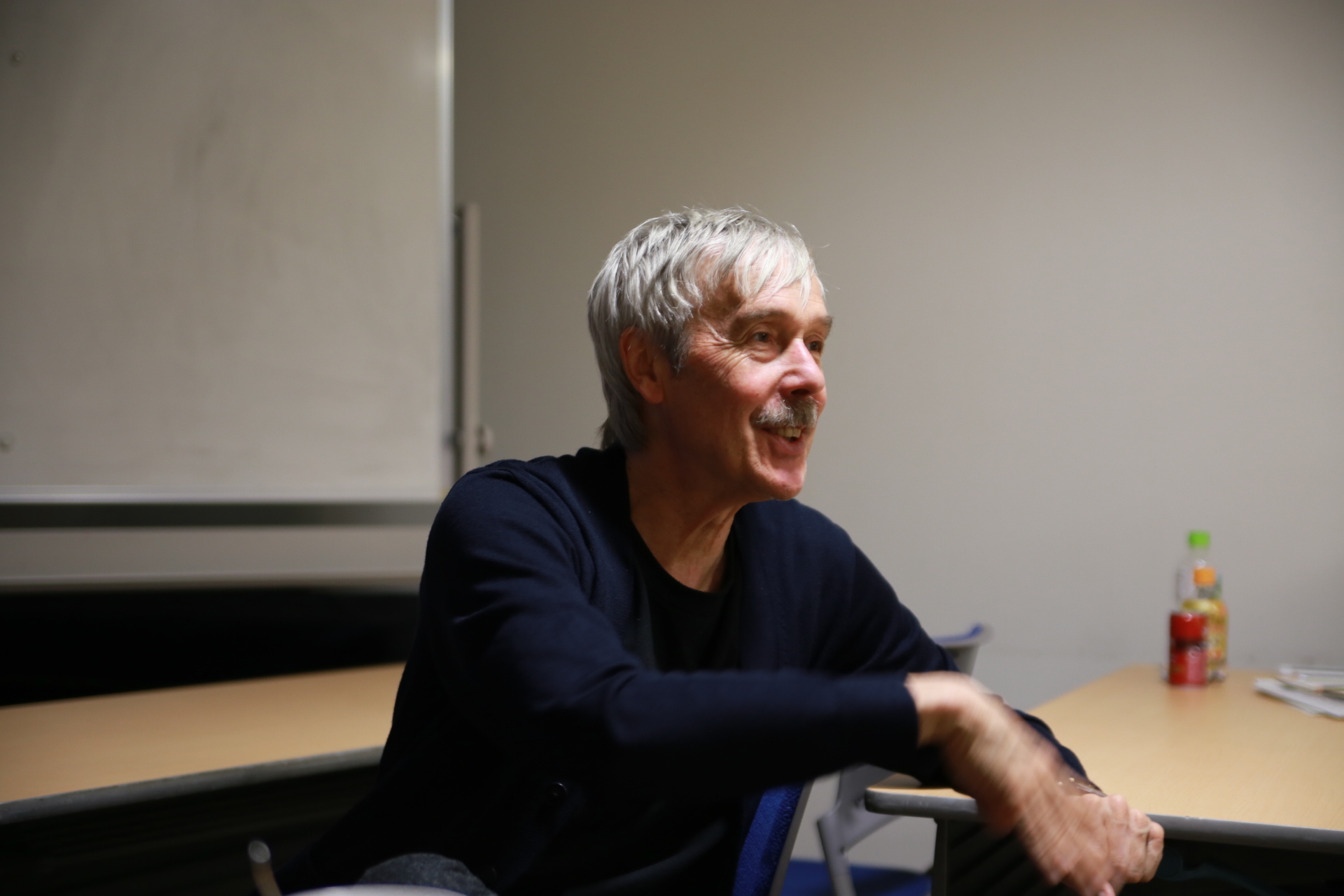
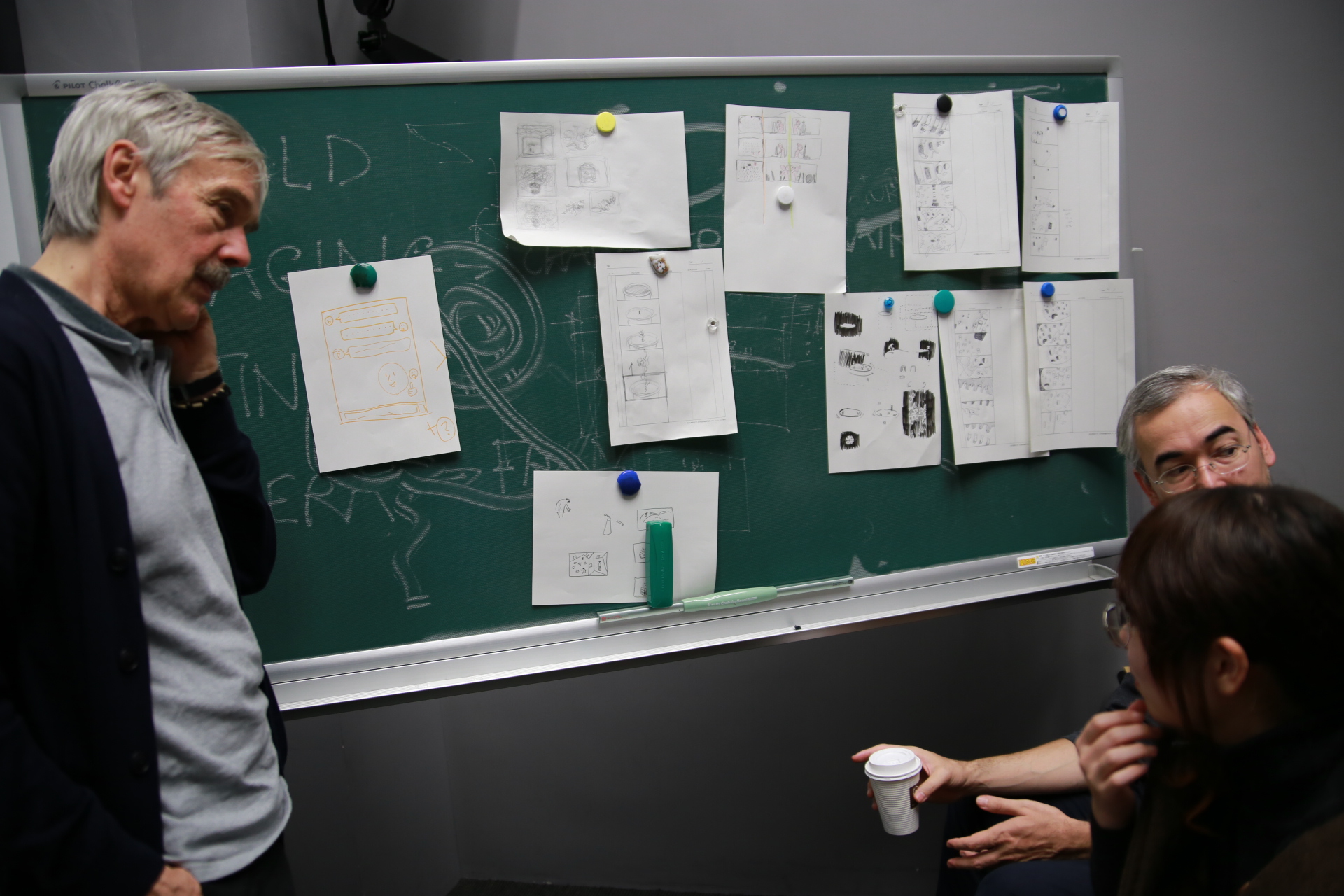
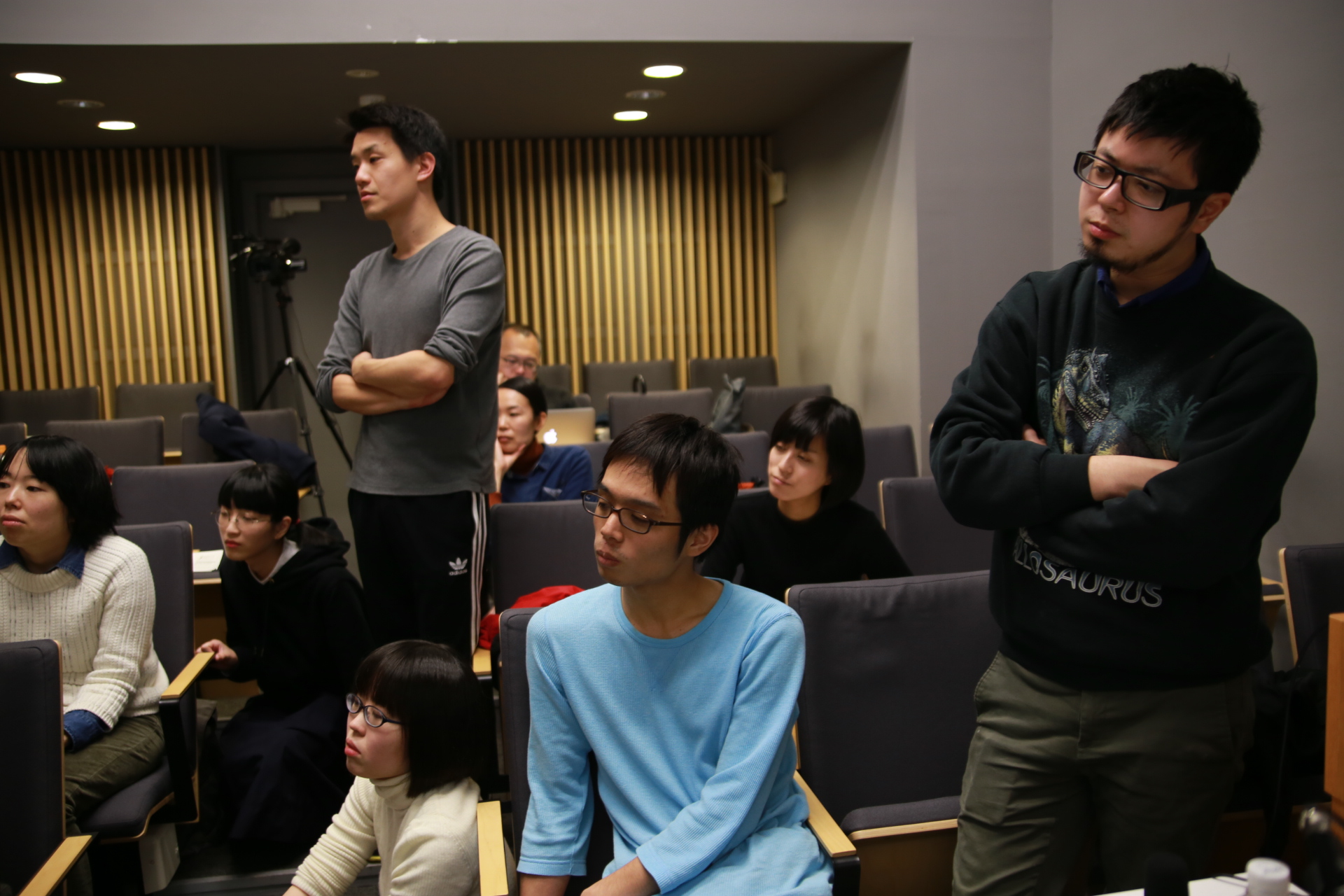
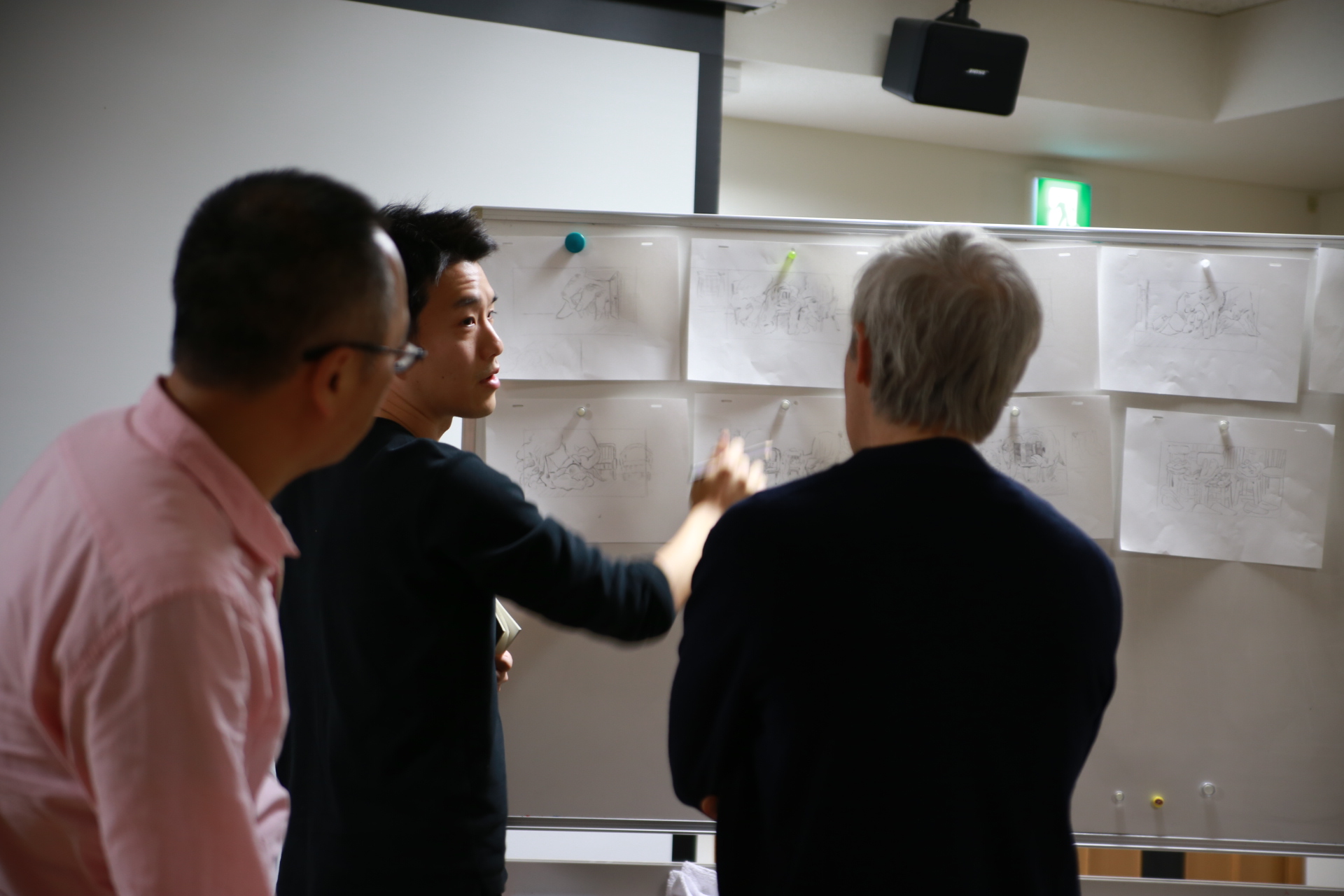
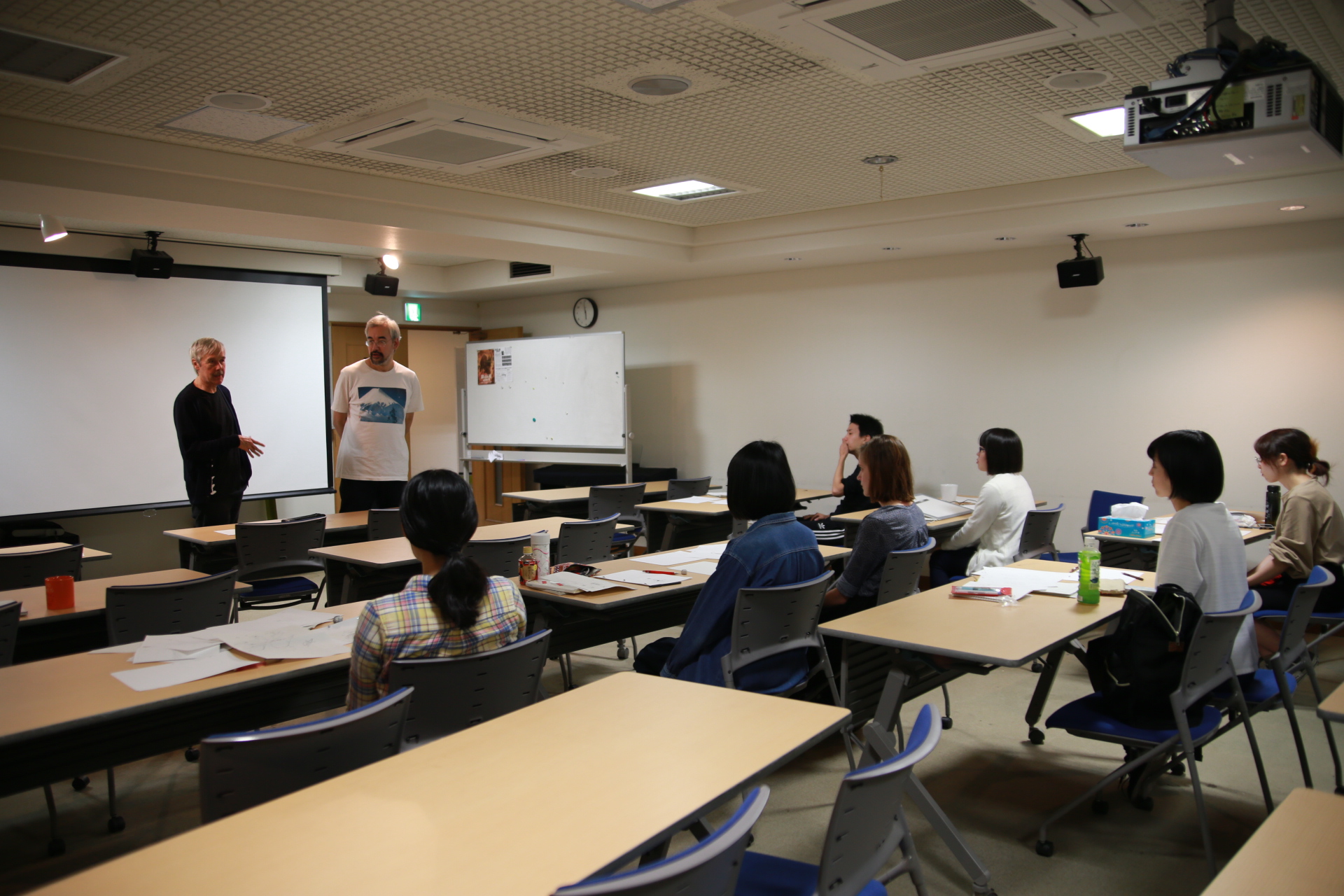
Tokyo University of the Arts Graduate School of Film and New Media held a special lecture and workshop by Raimond Krumme from October 17 to 27, 2017. The event was held as part of the Introduction to Contemporary Animation program. Mr. Krumme is an independent artist who has produced short animation films in Berlin, Germany, and the U.S. He also has a long career as an educator of animation in the U.S., Germany, South Korea, and Taiwan.
The workshop was held on Oct. 20 and 23 at the Bashamichi building on the Yokohama campus. The assignment of the workshop was to think about ideas for making a theatrical drama into animation. The participating students had read the Japanese text of The Chairs, which was originally written by the Rumanian-French playwright Eugène Ionesco, as preparation for the two-day workshop.
On the first day, they created storyboards, where their ideas were freely expressed in a series of thumbnails. Mr. Krumme said that interaction between a paper and the hands was important, and advised that they should try to find fortuitous elements in “drawing.” The choice of drawing tools was left up to the students. However, he said that using an unfamiliar tool could help visualize things that were usually unexpressed, and the action to draw a picture could help them observe the world. Their works were allowed to be set in any scenes in the drama. The ideas were presented by the respective students. As many of them don’t usually see or read theatrical dramas, they seemed to struggle to understand the text itself. However, Mr. Krumme positively commented that the students did a great job in the sense that they came up with a variety of fresh and eccentric ideas.
On the second day, the settings presented on the first day were developed into rough storyboards, which were later previsualized. The participants mutually asked and commented on them. During the instructions of acting, they sketched actors in motion on animation drawing papers.
On October 22, the 26th Symposium of Introduction to Contemporary Amination was held, during which a series of works by Mr. Krumme were shown in chronological order, and some of his TV commercials at the end of the symposium. Despite a typhoon, the event made a great success. It was attended by a total of 60 people, who continuously asked questions, causing it to be extended by half an hour. The audience appreciated the symposium as it was a valuable opportunity to hear the voice and opinion of the creator himself about his own works.
As an experienced educator, Mr. Krumme tactfully managed the workshop, making it so beneficial to the students. They were inspired by European dramas that they have few opportunity to be exposed to, while discovering new aspects of making animation that they had never realized. Furthermore, as they needed to discuss in English with the help of an interpreter, many of them were reminded of the importance of learning the language.







